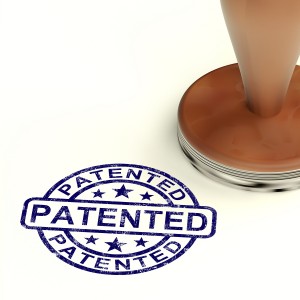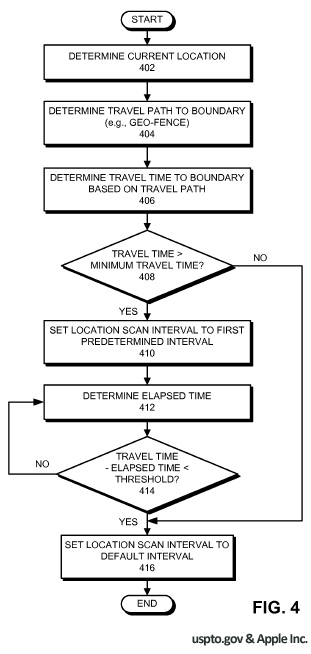One of the 33 patent applications published today by the United States Patent & Trademark Office (USPTO) which name Apple Inc. (NASDAQ:AAPL) as the assignee is entitled “Controlling Wireless Scans Used to Determine the Location of a Portable Electronic Device.” This application, number 20140179344, describes a method for pinpointing a mobile device’s location using not only GPS or beacons, but also Wi-Fi signals, cellular tower signals, and 3G or 4G network scans.
The application delineates how these varied signals can be used for precise location finding or geofencing. The mobile device equipped with this “wireless scan control” would analyze the strength and direction of nodes detected during standard wireless scans. Wi-Fi access points, for example, each have a unique identifier which enables the device to place them readily in space. The same is true for cell phone towers supporting the 3G or 4G wireless network. The signal strength is a good indicator of distance.
 Triangulating off these measurements, the mobile device could figure out its location with considerable accuracy. This is particularly true if the device’s user is in motion, since the device can compare the results of subsequent scans and establish boundaries in order to determine when the user crosses them. The patent notes that this would enable geofencing notifications anywhere that Wi-Fi or other wireless signals are present.
Triangulating off these measurements, the mobile device could figure out its location with considerable accuracy. This is particularly true if the device’s user is in motion, since the device can compare the results of subsequent scans and establish boundaries in order to determine when the user crosses them. The patent notes that this would enable geofencing notifications anywhere that Wi-Fi or other wireless signals are present.
The invention is envisioned as being used mainly for reminders set up by the user, such as a notification to call a client as soon as the user arrives at work, or to take out the garbage when coming home. Multiple notifications could be set up for different locations, so that the device delivers notifications as the user moves through their daily environment.

It is uncertain, however, if this method of geofencing will ever supplant beacons as a means of delivering location-based notifications to bearers of Apple (AAPL) iPhones, iPads, and iPods. Beacons enable greater precision, and, what is more, use very little battery power with their BlueTooth Low Energy (BLE) signals. The “wireless scan control” technique, by contrast, is energy-expensive, a fact noted in the application itself. The frequently of scans is limited in an attempt to extend battery life, but this, presumably, would come at the cost of lessened precision.
Still, the technology seems useful for casual everyday reminders and perhaps emergency GPS-mimicking location also.
The application is unusual for including a woman inventor in the list of those involved in creating the idea, Monika Bansal of Sunnyvale, California. The other inventors are Devrim Varoglu and Swapnil R. Dave. Ms. Bansal has worked for Apple since 2009 as an iOS Bluetooth QA Engineer, after working for two years at Qualcomm. She has degrees from Punjab Technical University and the University of Texas at Arlington.



